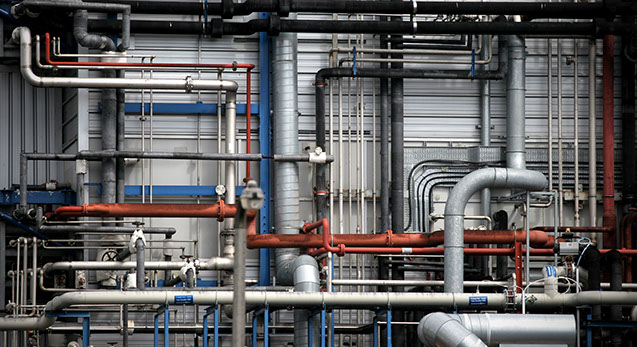905.685.7481 Contact

UNDERSTANDING NATURAL GAS: The Most Commonly Asked Questions About The Complexities of Natural Gas Pricing
What factors influence the price of natural gas?
Natural Gas prices are very much influenced by supply and demand within North America, and like other commodities, the price fluctuates daily on the open market due to supply and demand.
What factors create the demand for natural gas?
Natural gas is a more earth-friendly and cleaner burning fuel than other alternatives such as oil and coal, thus making Natural Gas the fuel of choice for many residential, commercial and industrial users, as well as power generating plants, due to its greener footprint.
The demand for Natural Gas is driven by the need for heating homes and buildings, for air conditioning and powering major appliances, as well as for industrial and manufacturing production applications. Gas intensive manufacturing and industrial applications include Natural Gas as a source of process heat, steam generation, and as a feedstock in the production of petrochemicals. The fastest growing segment of Natural Gas demand is for power generation plants for electricity production.
Of course seasonal demands can also have an influence on the price of Natural Gas. As with any summer or winter period, market conditions can easily change, and the North American Natural Gas market is very weather dependent, particularly when we realize hot or cold extremes. Cold weather results in more Natural Gas consumption for our heating needs, while hot weather conditions results in more consumption of Natural Gas to generate electricity, mainly for air-conditioning. However, demand will fluctuate on a consistent basis, thus the reason for fluctuations in price on a day over day basis.
What other factors influence the price of Natural Gas, other than supply and demand?
Other factors that influence the price of Natural Gas are storage volumes, as well as the cost of other energy options such as coal, oil, hydroelectric and nuclear power.
Storage facilities act as a buffer for filling the gap between supply and demand. Gas is put into storage facilities over the summer months and is then used throughout the winter months to meet the peak gas demands of society. Of course should both Natural Gas production and storage be insufficient to meet peak demands, then it’s likely that Natural Gas prices will rise. Therefore, a healthy balance of production and storage is critical to avoid huge price spikes.
Natural gas prices may also be influenced by the cost of other fuel options, as indicated above, due to the fact that energy users can use other fuels for their needs… And a good example of this would be in the industrial and electric utility sectors where many users have the ability to switch between oil and natural gas, which impacts supply and demand, and consequently the price.
Can Natural Gas prices be accurately predicted?
Prices are hard to predict with any certainty with freely marketed commodities, including Natural Gas. However, like most commodities, the price of Natural Gas tends to be cyclical in nature. Higher demand for Natural Gas will ultimately cause prices to increase, which will then stimulate additional exploration for Natural Gas sources, as well as increased production activity. Over time however, increases in supply will bring supply and demand back in check and will then usually influence price to move downwards.
As an example, between 1995 and 1998, low natural gas prices resulted in a slowdown in both exploration of new sources, as well as production activity, which contributed in part to a recovery of natural gas prices in 2000 and 2001.
Why does the price of natural gas increase in the winter?
Historically, Natural Gas prices will often increase in the winter months as many general users and companies alike use Natural Gas to heat their homes and businesses. Similarly, Natural Gas prices would decline through the warmer months as heating demand naturally decreases.
As well, our ever-changing climate has also had a direct impact on Natural Gas price trends, and now we are more likely to realize two price peaks within a calendar year, as both winter and summer demand can be driven by extreme temperatures. Cold weather means more heating needs and a greater demand for Natural Gas, while hot weather extremes results in more demand of electrical power for air-conditioning, and with so many electricity production plants using Natural Gas, you can see why we may realize two price peaks in a year.
To note, April through October are generally recognized as gas injection months, and these months are essential to ensuring a suitable amount of Natural Gas gets stored away in order to meet the winter usage demands. Therefore, the increased demand for electrical generation in the summer months, combined with Natural Gas injection requirements from April to October, are likely to result in seasonal price fluctuations becoming less pronounced.
What is the impact of higher Natural Gas prices on end user costs?
Like gasoline, the price of the commodity itself is only one of four main components that make up the price that the end user pays for their product.
The price users pay for heating with Natural Gas is based on three main components:
• Pipeline Transportation Costs
• Local Utility Distribution Costs
• Actual Commodity Price of Natural Gas
• Customer Charge
Even though Natural Gas prices fluctuate constantly, the other costs indicated above tend to remain fairly constant. Therefore, if the price of Natural Gas increases it then becomes a larger percentage of the total amount users will pay for Gas, thus potentially resulting in higher monthly bills to the end user.
As you can clearly see, Natural Gas pricing can be just as confusing as Electricity pricing, with many moving parts and constant fluctuations. That’s why we’re here to help you navigate the challenging commodity sector to ensure you avoid the many pitfalls that others have not been so lucky to avoid.
Take advantage of our industry expertise and we will guide you to the right choice for your business every single time… and all with no obligation and no fees or service charges to worry about.

Contact Us
We'd love to talk to you and discuss what smart business are doing today, so you can power your business forward tomorrow!
About Us
What We Do
Energy
Follow Us
The Value of Objective Advice
Volumes
Mission
Vision
Core Values
Energy Advice
Industries We Serve
Government
Business
Municipality
Educational
Hospitals
Hospitality & Commercial
Manufacturing
Industrial
Processing
Natural Gas
Electricity
Explosion of Communication
© Copyright 2015 Provincial Energy Inc.
Provincial Energy Canada Corporation, 20 Amber Street #16, Markham, ON L3R 5P4



















